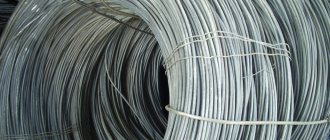Living on rocky lands with inconvenient terrain and poor soils, according to some researchers, forced people several hundred years ago to come up with a soilless method of food production. Today it has not lost its relevance. There are functional hydroponic farms - the best alternative to traditional crop production under difficult climatic or demographic conditions. Below we will talk about their capabilities and device.
Conventionally, they can be divided into home and industrial, automated and using manual labor.
Hydroponic greens production
Equipment for hydroponics
The process of growing hydroponically involves the absence of soil and complete human control. If cataclysms are possible in nature, leading to the destruction of the crop, then in such a greenhouse the conditions are regulated by a specialist who will immediately take measures to eliminate the factors inhibiting plant growth.
Hydroponic production has its own characteristics due to the lack of soil:
• no tillage required;
• no weeds;
• roots never dry out;
• productivity increases, as plants constantly receive the optimal amount of nutrients, light, water;
• there is no need to use pesticides to combat diseases found in soils;
• fruits do not accumulate substances harmful to humans, because they grow in an almost sterile environment.
Growing facilities are truly clean - this is a necessary condition for a high-quality hydroponic farm. Maximum sterile substrates, clean pallets, air circulation, optimal humidity levels - everything is aimed at creating a healthy microclimate inside the greenhouse, preventing diseases, mold, and rot.
Features of growing onions in the garage
In cold weather, green onions are very useful; they contain a large number of elements important for the body. The special taste and aroma of the product can add piquancy and originality to many dishes.
In spring and summer you can buy it at the market and in any store, but in winter it is quite difficult to find green onions. Therefore, growing such a product at home in winter is an excellent option for providing your family with vitamins and for additional income.
The main condition for this is compliance with all the rules for its cultivation, and there is always a demand for such products.
In addition, the onion business has many advantages:
- It does not require large investments and does not require special devices.
- This is a constant and quite good income; the products are in demand all year round.
- No special skills are required to organize a business (see Business in a garage: how to organize).
In winter, you can plant greens in the garage; growing onions has a simple technology; the main thing is to create the atmosphere necessary in this case. The most convenient option is to install shelving in the room (see Do-it-yourself shelving for the garage: how to make it correctly), which allows you to make maximum use of the entire room in the garage.
Growing onions in this case has a big advantage due to the proximity to your own home, which means you have the opportunity to observe the process at any time and maintain a positive temperature in the basement. A negative point when growing green onions in the garage in winter is the installation of artificial lighting.
Tip: When growing greens for sale in the garage in winter, in addition to light, you also need warmth. The required temperature conditions must be ensured here, so this is not the best place to organize an onion growing business in a garage. And if there is nowhere else, then it is worth remembering that the bulbs here will require special care.
What to grow?
Almost any crop can be grown using hydroponic technologies, but taking into account some nuances:
• There should be one type of plant in one room. This is due to various conditions for rapid crop growth. For example, strawberries need less moisture than lettuce, and a disease that appears on tomatoes will not spread to other nightshades;
• At different stages of development - the formation of a sprout, an adult bush, flowering, fruiting - the same plant requires different levels of pH, illumination, humidity, air temperature, solution concentration;
• Seedlings, greens, strawberries, blueberries, some medicinal herbs, lettuce and even fruit-bearing vegetable crops can be grown in small systems, grow boxes, mini-farms for home use. They take up little space, need special lighting, do not require significant energy costs, but produce a harvest that can satisfy the needs of the whole family;
• Growing ornamental flowering plants, including stem and leaf succulents, bromeliads, is popular: on hydroponic vertical racks they grow much faster, delighting with abundant greenery and flowering;
• Production of fodder greens for mini-farms, some ornamental species, does not require substrates, which makes maintenance easier;
• The technology is not suitable for root crops and tuber crops.
Watch a useful video about growing strawberries hydroponically:
How does pipe hydroponics work?
Currently, craftsmen have developed many modifications of hydroponic systems, adapted to individual capabilities and needs. But the bulk of structures are based on one of three basic operating principles:
- Tidal. When choosing this method, the solution is supplied to the roots for a short time at regular intervals. During the outflow of the nutrient solution, the root system is saturated with oxygen.
- Capillary irrigation. This type has a mixed technology. The root system of plants is placed in a light and very loose substrate, and the nutrient solution is continuously supplied in small quantities in the form of drip irrigation.
- Drip irrigation. Liquid continuously flows to the roots through small channels. The solution that the plants do not have time to consume is lowered into the container through drainage outlet hoses.
Most often, professional growers use the classic hydroponics options: the first or third. The second option gives good results when growing small root crops.
Design and principles of operation of hydroponic farms
In Russia, interest in hydroponic farming is growing every year. Both home mini-farms, homemade systems, and industrial greenhouses are gaining popularity. The design of all structures varies in scale and depends on the crop being grown. Take this into account if you are planning to organize your own business when drawing up a business plan.
The principles of operation of a ready-made hydroponic farm for home are the same as for a huge greenhouse, only the same amount of equipment is not required, and the installations themselves are miniature.
• Home farm with deep flow technology. The roots are constantly in water saturated with air. A mesh pot or platform with a hole, a pump, and an aerator are required. Moisture-loving crops grow well in such a mini-bed, but it cannot be used for vegetables.
• The nutrient layer system consists of a wide flat tray or trough with a continuously circulating solution 1-2 cm deep. Feature: the tray is located at a slight angle to ensure fluid movement. A compressor is not needed: an air cushion remains between the root and the water. The solution flows into the reservoir, and from there, using a pump, rises to the tray.
• The home garden bed, based on the principle of periodic flooding, is a pot with a double bottom. It is filled with solution at the bottom; A pump is also installed there, with the help of which the liquid periodically rises to the roots. The automated process, controlled by a timer, is suitable for growing vegetables in an apartment or shops.
• Aerohydroponic home setup is different from others: here the roots are not in contact with the solution, but are sprayed with it. To do this, a sprayer is installed inside the container. Thanks to it, after a certain interval, the root system receives moisture well saturated with air, similar to fog. With this method of watering, it grows in breadth, and due to small shoots, the area for absorption of the solution increases.
• A mini-farm with a drip irrigation system consists of a container with a double bottom. In its lower part there is liquid, which is dosed to the plants through small capillary tubes.
• Wick passive installation: a pot with a substrate is immersed 1-2 cm in the solution. The roots receive moisture due to capillary forces. Such a system is not equipped with a pump, timer, sprayer, and requires constant monitoring of the liquid level.
At home, installations are placed on window sills, supplemented with reflectors, or vertical systems are built, which also looks more aesthetically pleasing, saves space and does not interfere with the penetration of sunlight.
Growboxes
Turnkey growboxes are the same greenhouses, only intended for placement in small enclosed spaces of apartments, outbuildings, restaurants, and shops. The necessary microclimate is created inside them, which is ensured with the help of special lighting lamps, air circulation, and heating.
Each type of hydroponic equipment allows you to grow fresh herbs, berries, vegetables, and food all year round.
How to make a hydroponic solution
Due to their composition, hydroponic solutions are close to soil solutions; they contain all the nutrients plants need, which, moreover, are quickly absorbed. There are concentrated and working, that is, immediately ready-to-use solutions. Buying a hydroponic solution from a store is very expensive. As a rule, our hydroponic specialists use the Chesnokov-Bazyrina solution. In the table below we present its recipe for 10 liters.
Fenix14 Member FORUMHOUSE
Chesnokov-Bazyrina’s solution is simply a treasure. The components are sold at cheap prices in pharmacies, garden stores, and construction stores.
Nutrient solution Chesnokov-Bazyrina
| Mineral fertilizers, nutrients, salt | Recipe | ||
| Working solution | Concentrated solutions | ||
| g/10 l | 10 times g/10 l | 50 times g/500 l | |
| Ammonium nitrate | 0,2 | 2,0 | 10.0 |
| Potassium nitrate | 0,5 | 5,0 | 25,0 |
| Superphosphate | 0,55…1,10 | 5,5…11,0 | 27,5. ..55,0 |
| Magnesium sulfate | 0,3 | 3,0 | 15,0 |
| Iron sulfate (ferrous) | > 0,06 | 0,6 | 3,0 |
| Boric acid | 0,01 | 0,1 | 0,5 |
| Manganese sulfate | 0,0045 | 0,045 | 0,225 |
| Zinc sulfate | 0,0002 | 0,002 | 0,01 |
| Copper sulfate | 0,0002 | 0,002 | 0,01 |
| Cobalt sulfate | 0,001 | 0,01 | 0,01 |
| Ammonium molybdic acid | 0,001 | 0,01 | 0,005 |
The classic solution consists of nine elements, the last two listed in the table are not included in it.
Experienced hydroponics experts recommend making concentrated solutions, this will make it easier to maintain proportions. By the way, now many people make hydroponic solutions based on ready-made complex fertilizers, such as Kemira - they contain all the specified microelements.
But if you use an authentic recipe, look for all the components in gardening stores and chemical stores, in markets; boric acid, manganese sulfate and copper sulfate can be bought at the pharmacy. Instead of regular superphosphate, it is better to use double superphosphate.
After preparing the solution once or twice, you will be surprised how simple it is.
If you don’t have the most accurate scales, and you need hundredths of a gram, you can take, say, 5 grams, dissolve it in a liter of water and measure the required fraction by volume, not weight.
Large turnkey hydroponic farms
Many business projects and startups in Russia today are aimed at developing hydroponic farming.
These are projects related to:
• increasing the production of fresh, environmentally friendly food products,
• growing environmentally friendly, fresh additives to the main feed of cattle, small livestock, horses, pigs, poultry,
• cultivation of ornamental plants: roses, tulips, orchids,
• production of seedlings.
We have already noticed that home farms are a simplified version of large greenhouses. Now let’s list the main equipment for industrial complexes:
• containers for storing fuel, processing seeds, washing pallets,
• sprouter,
• containers, boxes for storing substrate,
• air circulation systems, heating, lighting, air conditioning, water purification, backup heaters,
• racks with trays, pots,
• conveyor belts for large farms,
• refrigeration units.
In addition, you should purchase an autonomous generator in case of a sudden power outage, timers, sprayers, pumps, hoses, and tubes. It is also necessary to organize a separate room for storing protective clothing, salts, fertilizers, and equipment: jars, containers, measuring instruments. The general principle for all installations is: feeding with a solution. So, we find a place for a fresh water tank.
How to make a hydroponics business successful
When creating a business plan, you should consider how the products grown on a hydroponic farm will be delivered, what specialists will be required, and who will manage the enterprise.
Clear organization, ensuring uninterrupted operation of equipment, high-quality materials and competent specialists are the key to a successful start.
Despite the large investments in the business, it quickly pays for itself and begins to make a profit by harvesting several harvests in one year.
Where is hydroponics used?
Countries with hot and dry climates, such as Israel, Kuwait and the United Arab Emirates, have long been embracing economical vegetable growing.
And in Israel there is even a farm where both greens and fish are grown. In this way, scarce fresh water is used most efficiently.
In the United States, hydroponics is practiced with vertical plant placement.
In Australia, several hydroponic farms are powered entirely by solar panels. In Great Britain there is an underground “greenhouse”, and in Italy there is an underwater one (although it is quite expensive and justifies itself only as an experiment).
While many still do not believe in the reality of a garden without land, leading companies have already established the production and sale of equipment for industrial and home hydroponic crop production.
The essence of hydroponics and its difference from conventional crop cultivation
Let's look at how plants can grow and bear fruit without soil. Scientists found out back in the 19th century that crops need to receive certain chemical elements for normal growth. The roots absorb them in the form of a solution, the formation of which occurs as follows.
The basis of any nutrient liquid is water. It acts as a solvent, diluting all components in its volume. When water enters the soil, it absorbs salts, minerals and other elements. Some of the moisture evaporates, the rest of the liquid is absorbed deep into the soil. When water hits the roots, it is absorbed by them, and along with the moisture, all the beneficial substances.
The more minerals and chemical elements the water absorbs, the better the plant is nourished: it grows faster, blooms and bears fruit. The roots, foliage and stems of crops that are in fertile soil are usually much larger than those of crops in poor soil. The same applies to fruits: they reach a large size, become juicy and nutritious.
All nutrient salts absorb moisture mainly from the soil. Soil fertility directly depends on the humus layer. Humus is a thin layer of humus that is located at the very top of the earth. It is obtained by decomposing biological organisms, grass, and foliage. It is from there that water absorbs most of the minerals. The layers of earth that are deeper than humus are not so important for plants in terms of nutrition.
To increase soil fertility, farmers resort to the use of fertilizers. These can be animal fertilizers or active chemical additives. They are capable of increasing productivity many times over, but their repeated use destroys the soil and pollutes it with heavy chemical elements, which are then not so easy to get rid of. After several harvests, fertility begins to drop sharply, so you should not get carried away with fertilizers.
In hydroponics everything is different. The plant growth cycle completely eliminates the need for soil. All the necessary elements are immediately introduced into the water, so there is no need for it to pass through the soil and dissolve minerals. The roots of the crops are partially or completely immersed in the nutrient liquid and absorb it. There is no need to fertilize the soil or treat it with additives and nitrates. In addition, the entire volume of nutrient liquid is available to plants, because there is no loss of it when absorbed into the soil. Evaporation is also reduced.
The only negative is that the lack of soil forces farmers to support the plant themselves: hanging branches, securing the trunk in a vertical position. Over time, when the seedling grows, it begins to bend towards the ground under its own weight. This can cause branches or the trunk itself to break. To maintain the base in an upright position, plants in the soil develop a powerful root system, thereby anchoring themselves in the soil. This is not possible in hydroponic systems, so you need to think about securing the plant yourself.
Hydroponic complexes for business
The production of hydroponic green fodder has begun to receive a lot of attention. In Russia and abroad, companies offer automated installations for growing GZK for farmers and businessmen. These modern and compact complexes are capable of feeding a large number of livestock. At the same time, more free money appears that can be used to develop your own business. Automated hydroponic systems are considered to be very economical.
Hydroponic complexes for the production of hydroponics are small-sized. At the same time, with their help it is possible to obtain a harvest comparable in volume to the harvest of a large field (from 500 kilograms to 100 tons per day). Space saving is achieved by germinating grain in pallets, which are arranged in several tiers on racks.
A hydroponic setup for growing green food usually includes equipment for sprouting grain, a water tank, racks and trays. For rapid growth, cereals are pre-treated by saturating them with oxygen. Afterwards, germination occurs in special installations, where the grain is allowed to sprout a small sprout. The next stage is placing the seeds in trays on racks, where they will grow for 7 days.
Automated installations are equipped with everything necessary: a ventilation system, heaters, air conditioners, lighting, water systems and more. Thanks to the general control system, the operator has the opportunity to monitor all indicators inside the growing room: temperature, air humidity, frequency of supply of nutrient solution to the pallets. Control over all these parameters can be entrusted to the computer, and it itself will adjust the temperature and humidity based on the specified settings. In this case, human intervention in the process of obtaining hydroponic green mass will be minimal.
What crops can be grown using hydroponic systems?
When it comes to the types of plants that can be grown in hydroponic systems, the choice is very wide - almost anything can grow. Vegetables such as lettuce, cabbage, arugula, and spinach take root very well in hydroponic systems and are recommended for a beginner just starting to try this method.
Homemade hydroponic herb garden, pump not connected
In addition to leafy greens, aromatic herbs such as basil, sage and chives work very well in small home systems. A more serious project is growing peppers, cucumbers and tomatoes.
Although many types of fruits and berries can also be grown in hydroponic systems, such as strawberries, they require a little more attention and space.
Hydroponic strawberries
It is worth noting that tall crops such as corn, as well as large roots and climbing plants are not very suitable for compact hydroponic systems. Preference should be given to species with a high ratio of useful to total plant mass.
15.11.2017











